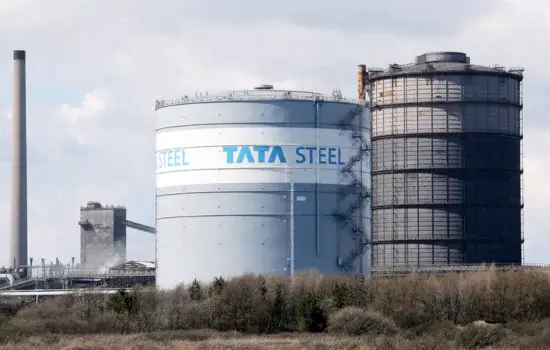Tata Steel, a flagship company of the Tata Group, is one of the world’s largest steel manufacturers. Founded in 1907, it has grown into a global powerhouse with operations in over 26 countries and a commercial presence in more than 50. Tata Steel’s evolution over the decades has been marked by significant achievements, strategic acquisitions, and continuous innovation. As the steel industry faces dynamic changes in 2024, understanding the company’s strengths, weaknesses, opportunities, and threats (SWOT) is crucial for assessing its future trajectory.
Current Overview of Tata Steel (2024)

As of 2024, Tata Steel is dealing with a complex business environment marked by fluctuating raw material costs, increased competition, and evolving regulatory demands. The company’s recent financial performance reflects some challenges, with a noticeable decline in profit margins. The net profit margin has dropped to -2.11% in FY 2024 from 3.14% in FY 2023, signaling potential operational inefficiencies and rising costs. Despite these challenges, Tata Steel remains a key player in the global steel industry, bolstered by its extensive product range, strong brand reputation, and significant geographical reach.
SWOT Analysis
Strengths:
1. Strong Brand and Legacy: Tata Steel benefits from the robust reputation of the Tata Group, one of India’s most trusted conglomerates. This brand equity helps the company maintain customer loyalty and attract new business.
2. Vertical Integration: The company has significant control over its supply chain, including captive coal mines and iron ore resources, allowing it to manage costs effectively. This control is crucial in maintaining competitive pricing and securing raw material availability.
3. Global Footprint: With operations in Europe, India, and other regions, Tata Steel enjoys a diversified revenue stream that reduces its dependence on any single market. This global presence also provides resilience against regional economic downturns.
4. Economies of Scale: Tata Steel’s large-scale operations enable it to achieve lower per-unit costs, enhancing its competitiveness in the global market.
Weaknesses:
1. High Debt Levels: Tata Steel’s aggressive acquisition strategy, particularly in international markets like Europe, has led to increased debt. The company’s debt-to-equity ratio has risen, posing a risk to its financial stability.
2. Operational Inefficiencies: Compared to global industry leaders, Tata Steel has room to improve in operational efficiency, particularly in its European operations. These inefficiencies can erode profit margins, especially in a highly competitive market.
3. Exposure to Cyclical Industry: The steel industry is notoriously cyclical, with demand closely tied to economic conditions. Tata Steel’s performance can be significantly impacted during economic downturns, affecting its revenue and profitability.
Opportunities:
1. Technological Advancements: Tata Steel is at the forefront of adopting new technologies like the Corex and Hismelt processes, which can reduce production costs and lower carbon emissions. These innovations provide the company with a competitive edge in a market increasingly focused on sustainability.
2. Growing Demand in Emerging Markets: The rising demand for steel in India and other emerging economies presents a significant growth opportunity. Tata Steel is well-positioned to capitalize on infrastructure development and urbanization trends in these regions.
3. Strategic Acquisitions and Partnerships: The company’s strategy of acquiring assets in resource-rich regions like Africa and Asia can secure long-term raw material supplies and reduce dependency on external sources. Furthermore, forming joint ventures with international players can help Tata Steel enhance its technological capabilities and expand its market reach.
4. Digital Transformation: Embracing digital technologies to enhance supply chain efficiency, customer engagement, and operational transparency can help Tata Steel improve productivity and reduce costs.
Threats:
1. Rising Raw Material Costs: The volatility in the prices of coking coal and iron ore can significantly impact Tata Steel’s production costs, squeezing profit margins. The company’s heavy reliance on these commodities makes it vulnerable to global market fluctuations.
2. Intense Competition: The global steel industry is highly competitive, with major players like ArcelorMittal and POSCO constantly vying for market share. This competition can lead to price wars, further pressuring Tata Steel’s profitability.
3. Environmental Regulations: As a significant emitter of carbon dioxide, Tata Steel faces increasing pressure from governments and environmental groups to reduce its carbon footprint. Compliance with stringent environmental regulations can lead to higher operational costs.
4. Economic Slowdowns: Any global or regional economic downturn can lead to reduced demand for steel, adversely affecting Tata Steel’s sales and revenue. The company’s exposure to multiple markets makes it susceptible to economic fluctuations worldwide.
Conclusion
Tata Steel remains a formidable player in the global steel industry, leveraging its strong brand, extensive resources, and technological innovations. However, it faces significant challenges, including high debt levels, operational inefficiencies, and an increasingly competitive environment. The company’s ability to capitalize on emerging opportunities in technology and growing markets, while mitigating threats such as rising costs and regulatory pressures, will be crucial in determining its future success. Tata Steel’s strategic focus on innovation and sustainability, coupled with its global reach, positions it well to navigate the complex landscape of the steel industry in 2024 and beyond.